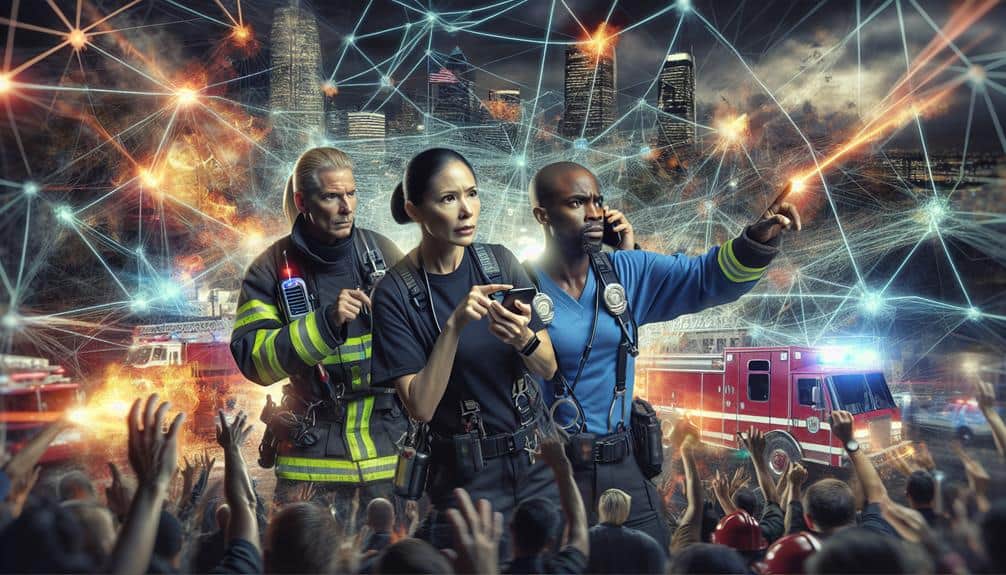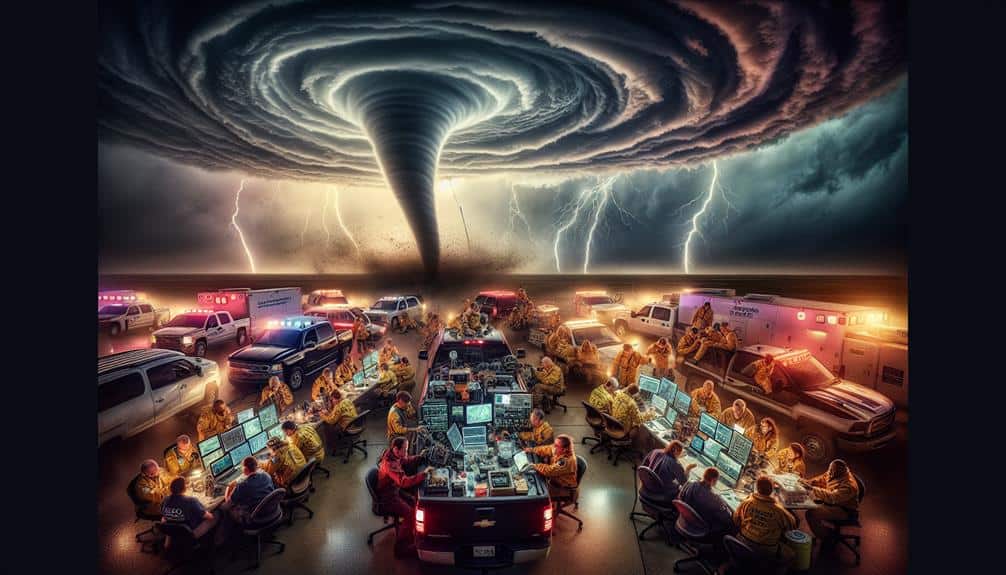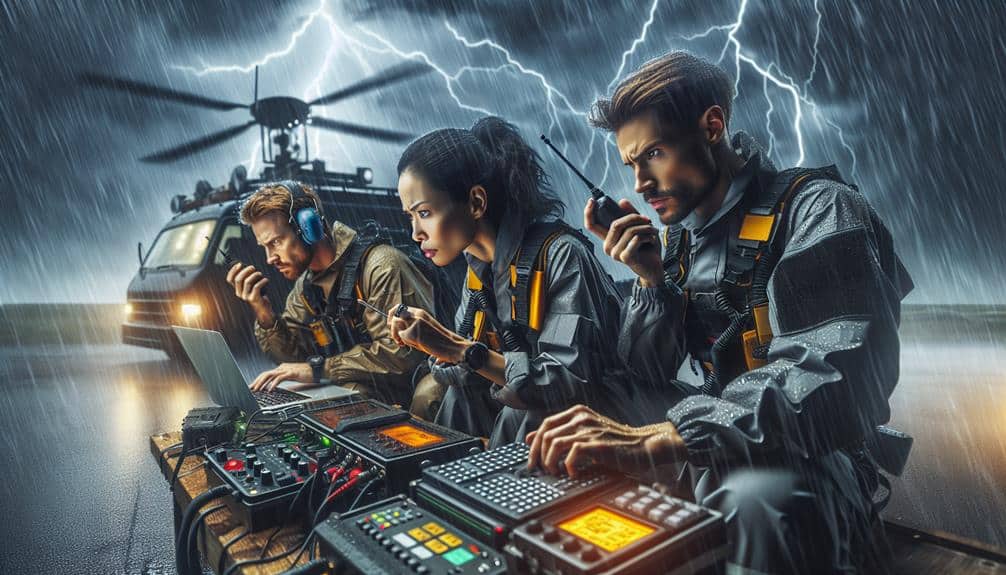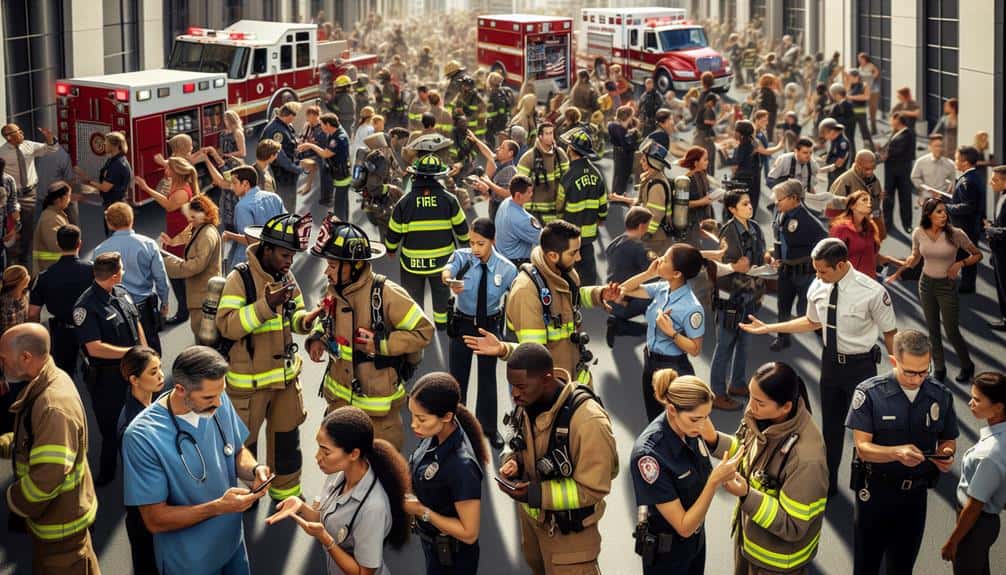In emergency response, teamwork's key benefits include enhanced situational awareness, improved resource allocation, faster decision making, increased safety measures, and effective communication channels. We collectively gather and analyze critical information rapidly, ensuring no single person is overwhelmed. Our coordinated approach maximizes resource use, adapting swiftly to evolving circumstances. By leveraging trust and mutual respect, we expedite decisions to tackle urgent issues. Collaboration brings together diverse perspectives, implementing resilient safety protocols. To explore how these elements interconnect for the best response, let's delve deeper.
Key Points
- Enhanced situational awareness through collective insight and shared responsibility.
- Optimized resource allocation via collaborative planning and clear communication.
- Faster decision making driven by efficient coordination and mutual respect.
- Increased safety through diverse perspectives and adherence to protocols.
Enhanced Situational Awareness
In an emergency response, teamwork greatly boosts our situational awareness by allowing us to gather and share critical information rapidly. When we engage in collaborative problem solving, each team member contributes unique perspectives and expertise, enhancing our understanding of the situation. This collective insight allows us to accurately assess risks and make informed decisions swiftly.
Shared responsibility in emergency scenarios guarantees that no single individual is overwhelmed with the burden of information processing and decision-making. Instead, tasks are distributed among the team, allowing us to cover more ground and respond more efficiently.
For instance, while one member gathers on-the-ground intelligence, another might coordinate with external agencies, and yet another could focus on communicating updates to all stakeholders.
Improved Resource Allocation
Beyond enhancing situational awareness, effective teamwork also optimizes resource allocation by guaranteeing that personnel, equipment, and information are deployed where they're needed most. When we engage in collaborative planning, we pool our collective knowledge and skills, enabling us to identify the most essential needs and assign resources accordingly. This not only saves time but also minimizes waste, ensuring every asset is used to its fullest potential.
Our approach to resource allocation is rooted in clear communication and mutual understanding. By working together, we can quickly assess the situation and determine the best course of action. This type of efficient execution allows us to respond to emergencies with precision and agility, guaranteeing that we can address the most pressing issues without delay.
Moreover, teamwork enables us to adapt to changing circumstances rapidly. If new information arises or if the situation evolves, our collaborative planning ensures we can reallocate resources swiftly and effectively. This dynamic approach is critical in emergency response, where conditions can change in an instant.
Faster Decision Making
How can we expedite decisions more effectively during emergencies? The key lies in harnessing the power of teamwork.
When we engage in collaborative problem solving, we leverage diverse perspectives and expertise, which accelerates our ability to identify solutions. By working together, we can quickly weigh options, predict outcomes, and make informed decisions in real time.
Efficient coordination is another cornerstone of faster decision making. With a well-organized team, we can streamline communication channels and guarantee that everyone is on the same page. This minimizes delays caused by miscommunication or redundant efforts.
When each team member knows their role and responsibilities, we can execute plans swiftly and adapt to changing situations with agility.
Moreover, teamwork fosters an environment where trust and mutual respect thrive. In high-pressure scenarios, this trust enables us to delegate tasks confidently, knowing that our colleagues will perform their duties competently. This level of confidence is essential for making swift decisions without second-guessing.
Increased Safety Measures
By leveraging collaboration, we can implement more resilient safety measures that protect both responders and affected individuals during emergencies. Through teamwork, we enhance our ability to identify potential hazards and devise strategies for risk mitigation. Each team member's unique perspective allows us to foresee and address risks more effectively, guaranteeing a thorough approach to safety.
Teamwork enables us to adhere to and improve emergency protocols. When we work together, we can quickly assess the situation, distribute tasks efficiently, and guarantee that everyone follows established safety guidelines. This coordinated effort minimizes the likelihood of errors that could compromise safety. Furthermore, teamwork fosters a culture of accountability, where each member feels responsible for maintaining high safety standards.
In the high-stakes environment of emergency response, our combined expertise allows us to implement dynamic, adaptive solutions. We can swiftly modify our strategies based on real-time information, guaranteeing that our safety measures remain effective throughout the evolving situation. This agile approach not only maximizes the protection of all involved but also reinforces the importance of collective effort in achieving best possible outcomes.
Ultimately, by prioritizing teamwork, we enhance our ability to maintain safety and mitigate risks, ensuring everyone's freedom and well-being during emergencies.
Effective Communication Channels

Clear and efficient communication channels are vital for coordinating our efforts and guaranteeing rapid response during emergencies. When every second counts, communication effectiveness becomes the backbone of our operations. We need to transmit and receive information swiftly and accurately to mobilize resources and coordinate actions seamlessly. This level of precision isn't just a necessity—it's a requirement that can mean the difference between life and death.
By establishing robust communication channels, we enhance team coordination. Everyone knows their role and what's happening in real-time, reducing confusion and redundancy. We can deploy personnel to critical areas faster and guarantee that emergency equipment is in the right place at the right time.
Communication effectiveness also fosters trust among team members, as everyone feels informed and aligned with the overarching mission. Moreover, we leverage technology to amplify our communication capabilities. Tools like real-time messaging apps, emergency broadcast systems, and GPS tracking ensure we're always connected. These tools streamline information flow, making sure that even the smallest details aren't lost in the chaos of an emergency.
Frequently Asked Questions
How Do Team Dynamics Affect Stress Levels in Emergency Response Personnel?
Studies show that strong team dynamics can reduce stress levels by 30%. When we work cohesively, we share the load, communicate better, and support each other, which notably lowers our stress during high-pressure emergency responses.
What Training Programs Are Essential for Effective Teamwork in Emergency Situations?
We need training programs that focus on simulation exercises, communication strategies, crisis management, and collaborative skills. These elements guarantee we're prepared, enhance our teamwork, and enable us to handle emergencies efficiently, giving us the freedom to act decisively.
How Does Teamwork Influence the Mental Health of Emergency Responders?
Teamwork influences our mental health by providing team support, which boosts mental resilience. When we face crises together, we share burdens and solutions, reducing stress and promoting psychological well-being, allowing us to perform our best.
What Role Does Leadership Play in Fostering Teamwork During Emergencies?
We believe leadership strategies and effective communication techniques are crucial in fostering teamwork during emergencies. Leaders enhance team cohesion and facilitate conflict resolution, ensuring everyone works together seamlessly under pressure. This empowers us to respond efficiently.
Are There Technological Tools That Enhance Teamwork in Emergency Response Scenarios?
We rely on communication platforms and collaboration software to streamline our efforts. Remote monitoring and data analytics provide real-time insights, enhancing our decision-making and coordination, ultimately boosting our efficiency and effectiveness in emergency response scenarios.


